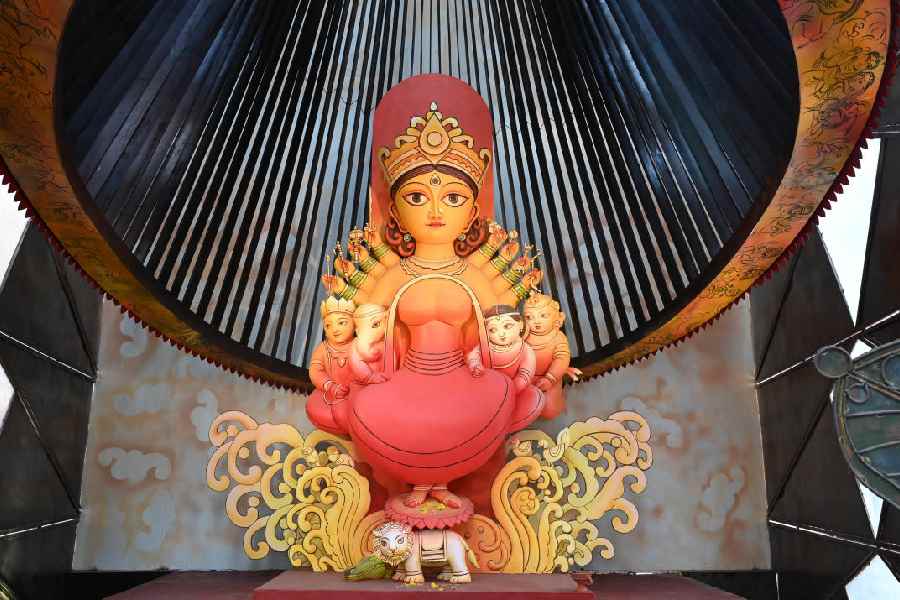A Puja theme has been woven around Rabindranath’s call for a free world.
The theme at the State Bank Park Sarbojanin Durga Puja in Joka is “Elem natun deshe (Arrived in new land)”.
A land without the smell of guns, where you can fly uninhibited as the birds do. “It is a utopian world that we have created here”, says Sanjay Majumdar, a member of the puja committee.
The main attraction of this puja is the idol that has been conceptualised by veteran artist of the Bengal school Ramananda Bandopadhyay, who had trained at Kala Bhavana at Santiniketan under the guidance of Nandalal Bose. He is inspired by the simplicity and uncomplicated lives of the people in rural Bengal of which he has left enough imprint on this pandal.
The idol is a celebration of the mother image of Durga with her children in her lap. She is on a lotus pedestal on the back of a miniature lion, which is signature Ramananda.
The artist imbues the idol with the colour red and there is a bit of rust and green, too. The vahanas, if one looks carefully, can be found in the midst of swirling clouds on which the Devi descends.
The figures of the deities are rotund, with large eyes and a fullness that imparts them with a quintessential Bengali look.
More of his style is strewn across the pandal, in the twin wrought iron birds that line the two sides. Simple yet classical lines of the master artist bring to life nature in all its abundance.
The idol is placed in the middle by a gigantic open-ended conical frame, the edges of which have patachitra paintings by Chandan Patua.
The pandal has lofty structures that depict white bird feathers and brown minars with lights illuminating from within. The effect is that of a utopian world.
“We have kept no boundaries to the pandal. The idea is to have a world where there are no restrictions or rules, visas, boundaries. The pandal is open to the sky except for the portion where the idol is placed,” said Majumdar.
“The pandal is a tribute to Ramananda, who is now 87. We wanted to pay our respects to the artist. He was telling us about his days at Santiniketan. Ramananda loves birds and has pigeons at his home. He said Ramkinkar Baij used to have a cup of cocoa with biscuits and while having that, he used to feed the crows with his biscuits. And that is how Baij studied and drew his crows,” said Majumdar.
The Tagore song, Elem natun deshe, plays on a loop at the pandal.
